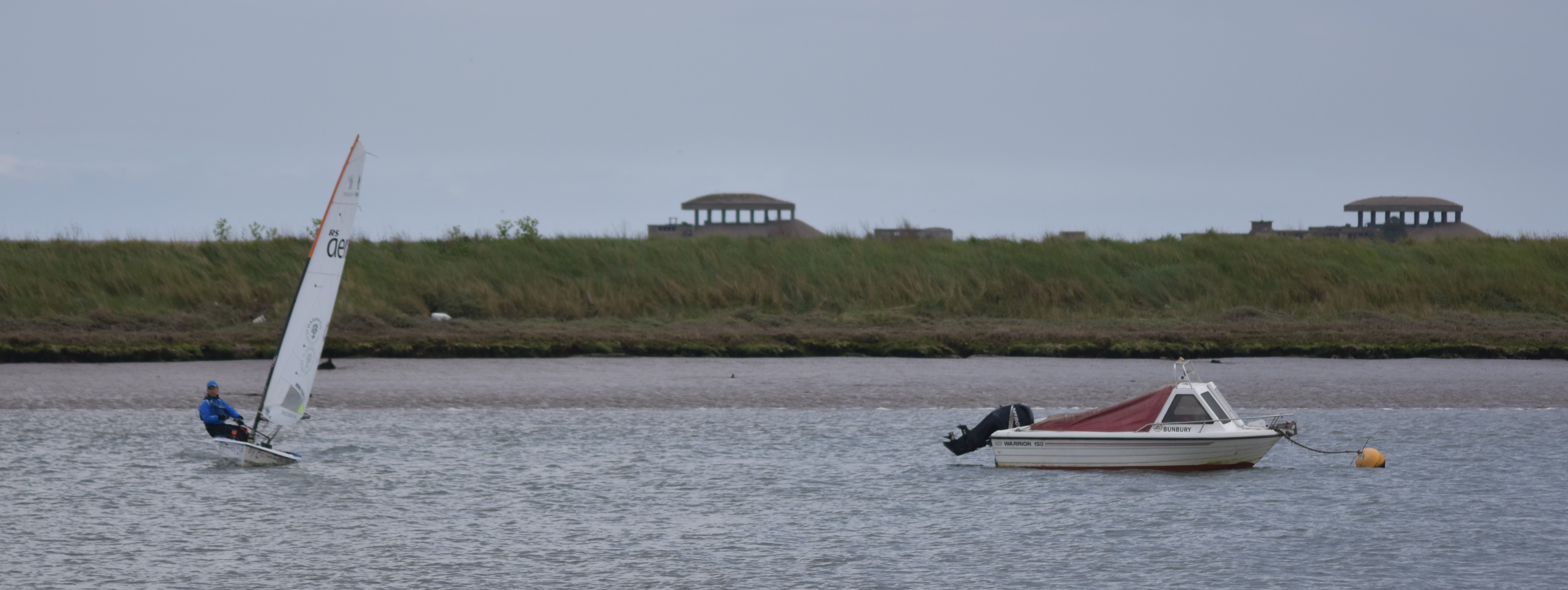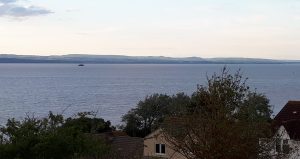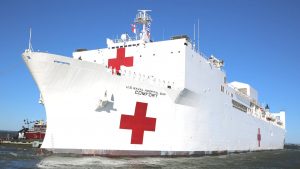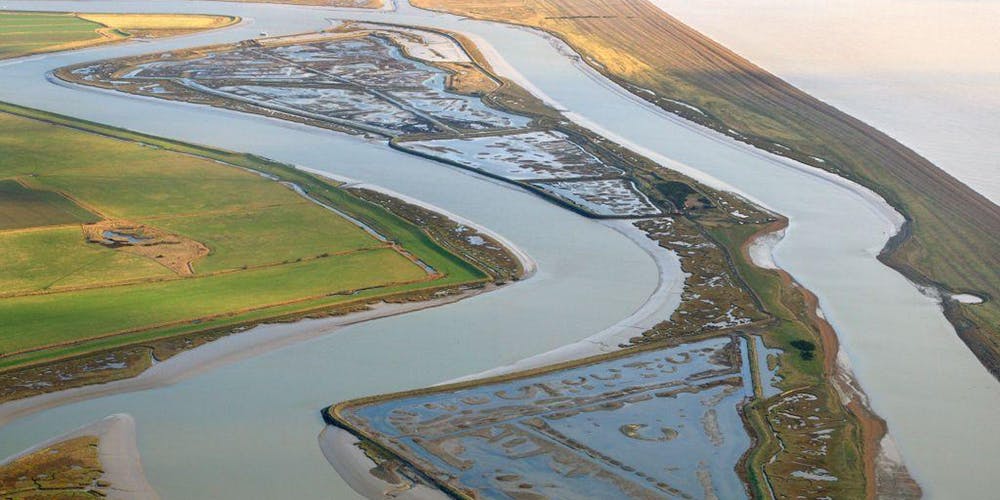
Suffolk’s only island, Havergate Island is a haunting island surrounded by mysterious relics of the cold war. Encircled by the River Ore the island consists of salt water lagoons, salt marsh, vegetated shingle and mud flats. The island is home to many varying types of birds and in 1947 pied avocets were found on the island for the first time in the UK since they had gone extinct over 100 years before. Following this discovery the RSPB purchased the island in 1948 and have since managed it for the benefit of birds and the environment.
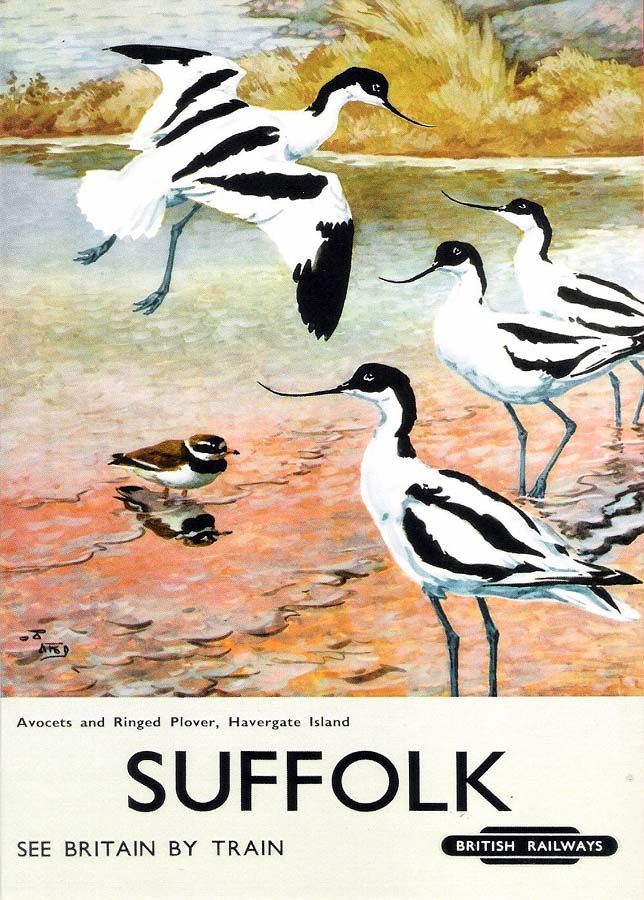
To the east of Havergate Island is the haunting shingle spit of Orford Ness. The peninsula was formerly administered by the Ministry of Defence, which conducted secret military tests during both world wars and the Cold War. In the 1930s Orford Ness was the site of the first purpose built experiments on the defence system that would later be known as radar. Having proved the technology on Orford Ness it later became the Chain Home radar system in time for its vital role in the Battle of Britain.
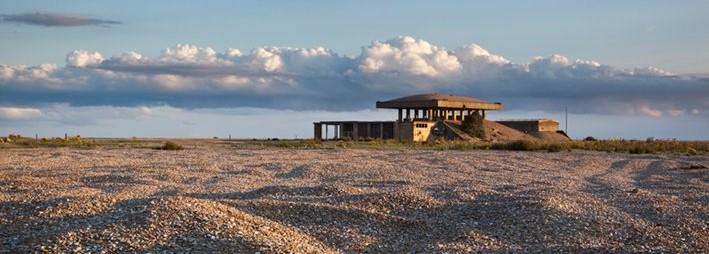
The 1950s saw the construction of specialised facilities to exploit new post-war technologies such as nuclear power. AWRE Orfordness was one of only a few sites in the UK, and indeed the world, where purpose-built facilities were created for testing the components of nuclear weapons. At the height of the Cold War AWRE and the Royal Aircraft Establishment used Orford Ness for developmental work on the atomic bomb. The “Pagoda” building shown above dates from that era.
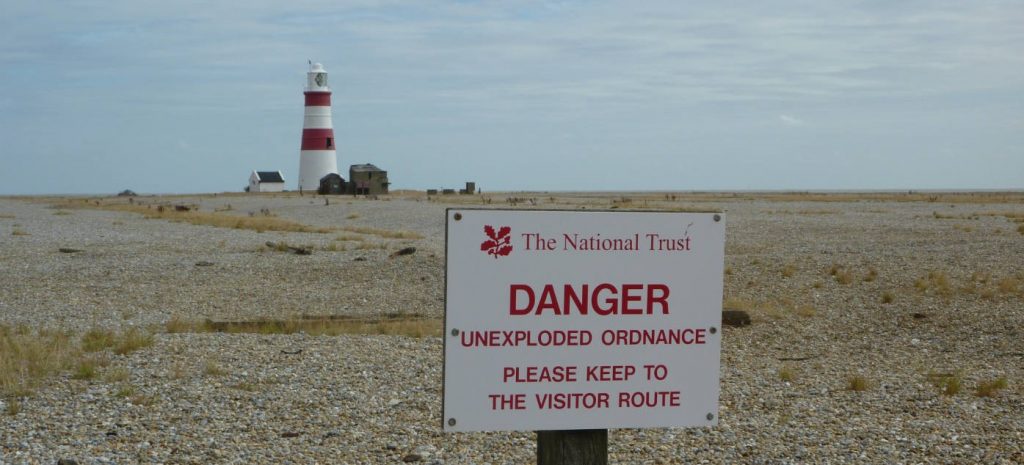
Amongst the atomic experimental sites Orford Ness is perhaps the most architecturally dramatic and remains the only one allowing general public access at the present time. The AWRE ceased work on the site in 1971 but visitors need to careful where they tread!
Here’s some great “Paramotor” footage of the intriguing scenery that is Orford Ness and Havergate Island.



